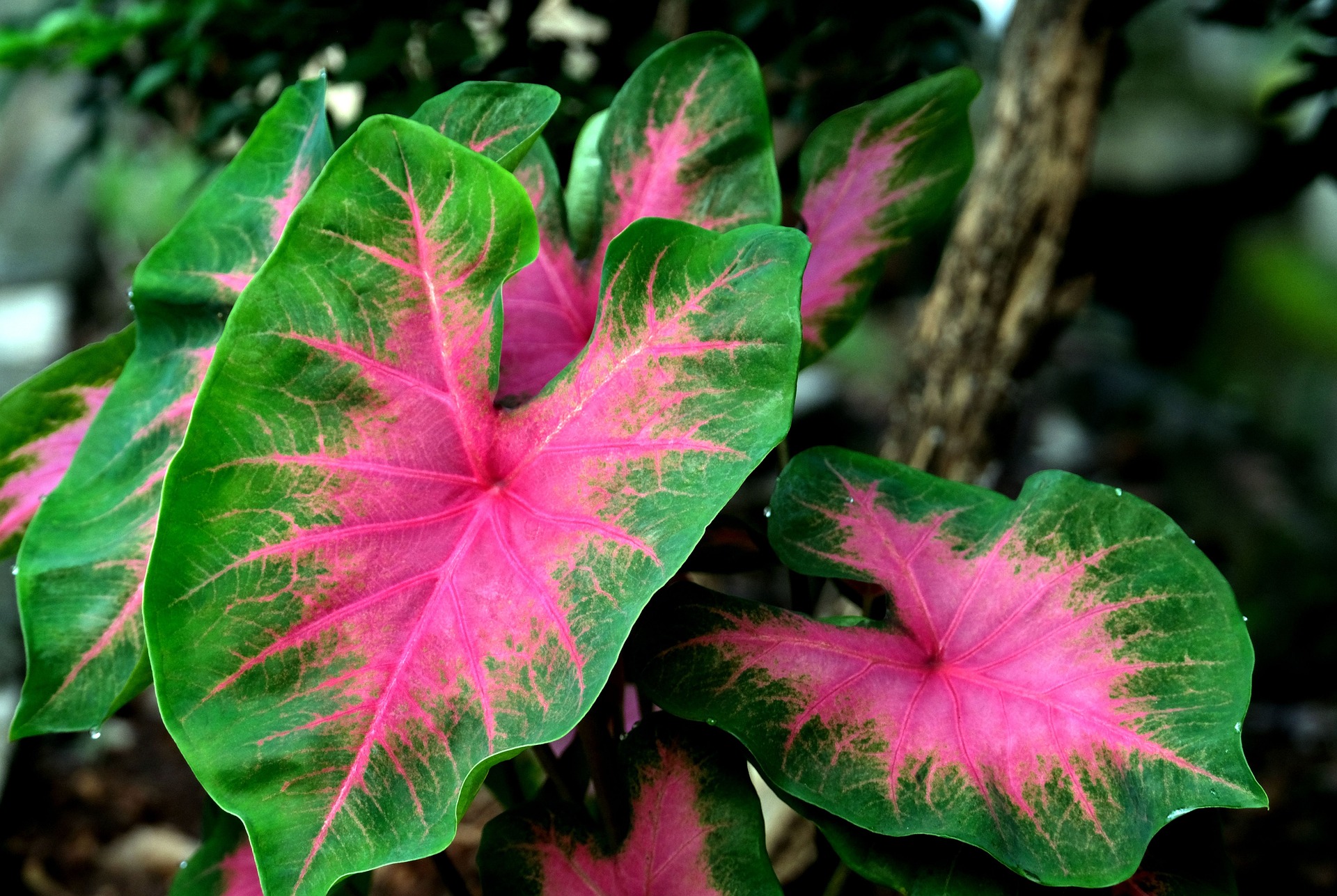Looking for a dynamite display of color and foliage for that shady area in your yard or garden? Look no further than caladium plants with their heart-shaped leaves. Learn how to grow and care for these leafy perennials.
About Caladiums
Cladiums are nothing if not colorful. The festive foliage of this tropical plant—from its bright midribs to its mottled, veined, and striped leaves in shades of green, white, pink, rose, or red with contrasting margins—adds interest and, when
set in motion by a breeze, energy to any setting. And there are thousands of choices!
Caladium is a genus of tropical perennial plants in the family Araceae. They are commonly known as Elephant Ears, but other plants also use that name, like Alocasia, Colocasia–the famous giant black elephant ear–and Xanthosoma. Check for the Caladium name on the product description to be sure. The most cultivated species is Caladium x hortulanum, aka C. bicolor, which is also sometimes called angel wings, heart of Jesus, or mother-in-law plant
Caladiums bear two main leaf shapes, fancy and lance (or strap). Fancy-leaf types produce large, heart-shaped leaves supported on petioles that meet the leaves in mid-underside. These caladiums thrive in semi shade and may reach 12 to 30 inches in height, depending on the cultivar and growing conditions. Lance- or strap-leaf types have long, narrow foliage with ruffled edges on petioles that meet them at the center edge of the underside. These usually top out at less than 12 inches tall. Cut leaves can last several days in a vase of fresh flower arrangements.
Native to Central and South America, these tropical tubers are hardy to USDA zone 7 and warmer. So, many gardeners who live north of zone 7 will grow caladium as an annual. Or, the tubers can be dug up for fall and stored over winter as bulbs. They provide impressive color and size while growing in those shadier parts of your garden or beds where other plants don’t want to thrive.
But many folks grow caladiums in containers, putting the colorful pots in shady spots. Caladiums are also popular as colorful houseplants indoors.
A Note About Caladium Tubers
Caladium tubers are covered in buds; basically, the larger the tuber, the more foliage it will produce. They are graded into four sizes, with the smallest being #2, then moving up to #1, Jumbo, and occasionally, Mammoth.
Mixed bags of caladium tubers sold at big box stores are often smaller #2 tubers. They’ll still grow and provide beautiful foliage, but likely not as much of it. Expect to pay premium prices for the larger #1 and up selections.
To show off your caladiums, plant several tubers of the same variety in one location and create a large, impactful show of foliage, along with ferns or coleus. They also look great paired with impatiens or fuchsias, whose flowers complement the caladiums’ assorted pinks, reds, greens, and whites.













